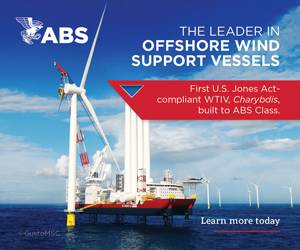Insights
Back to the Drawing Board
Lies, Damn Lies, and Inextinguishable Lore – EV Fires
By Rik van Hemmen, CEO, Martin & Ottaway
A few weeks ago I was talking to some professional fire fighters and was regaled with EV fire fighting disasters. They told me that EV caught fire all the time, that EV fires were much more dangerous than gasoline fires, and that fire trucks could not carry enough water to put out an EV fire. When I asked if they had fought any EV fires, they told me their information came from reliable sources and then asked me if I would park my Chevy Bolt in my garage. They focused on my Chevy Bolt, since it is widely regarded as a fire hazard. For the record, when I first saw the fire statistics on this car model, I never made a serious effort at getting it fixed and that resulted in recent GM update that basically stated: “If your car did not go on fire after all this time, the risk is negligible and if you have not replaced the battery pack yet, you get to keep the old one.”
Meanwhile, I would never park my Chevy Bolt in my garage, but that is due to the fact that my stuff filled garage has never been able to fit a car, even that little Chevy Bolt. Unless it is a classic car, I see no need to park a car in garage. At first glance it may nice to park a car in a garage when a snow storm is due, but when one does the actual snow clearing math, it becomes apparent it is simply a toilet seat up or down argument (The toilet seat argument is a “choose your poison” argument. Toilet seat up is mathematically more efficient, but politically less attractive).
But it made me think, and it made me think in the context of fire hazards for EV’s. One thing that I was vaguely aware of is that IC cars probably would go on fire more often than EV’s but I did not have the data on hand, so I did not raise it with the fire fighters. I was pretty comfortable that the combustion value of EV batteries is no more than a tank of gas, but when I tried to explain that, I was confronted with dozens of what abouts. To the uninitiated, a “what about” is a concern that is only vaguely related to the subject at hand, but is difficult to address because it is only vaguely related to the subject.
On the way home I made a mental note to do some more research on the issue. Obviously, that never happened when I got home.
But then Jim Dolan sent us all a copy of the International Union of Marine Insurance’s “Best practice & recommendations for the safe carriage of electric vehicles”; a truly excellent document that provides a proper discussion of EV fire risks on ships.
IUMI summarizes the publications as follows:
“Our paper draws on a body of scientific research which demonstrates that fires in battery EVs are not more dangerous than fires in conventional vehicles, nor are they more frequent. Although statistics continue to be gathered, they currently estimate that, in general, there are fewer fires from EVs compared with fires from conventional vehicles when driven over the same distance.”
Please note that from an underwriter’s point of view, a lower risk of EV fires is not necessarily beneficial. Low risk means low premiums.
The paper itself digs deeper into the subject of firefighting, and confirmed my combustion load suspicion by noting that, once a car goes on fire, there is little difference between an EV and an IC car. This is mostly because the fuel of the fire is only 20% car fuel or battery, and the remaining 80% is the rest of the car, such as car seats and plastics.
There are some considerations with regard to battery fires and generally one is faced with having to manage relatively long-lasting heat generated by the “burning” battery. Moreover, while it is possible to put out a burning IC car with water, the approach with an EV should be to put out the burning seats and plastics, and then to keep cooling the battery thermal runaway to prevent reignition until the battery is truly dead. Since shipboard fire needs to be fought to extinction as soon as possible, this is a real concern aboard ships. There is more flexibility along the side of the road and with house fires once people are safe.
Since a battery thermal runaway is not driven by oxygen, foam is less effective at putting out a battery thermal runaway, however the paper suggests that foam can still be used and the trick is to maintain the foam blanket until the thermal runaway is done.
An EV fire may take longer to completely extinguish, but chances are that it is easier to manage in the early stages (Keep wetting the car to prevent ignition of the other stuff until the battery is cooked off). With a gasoline car there is always a rush to completely kill the fire as soon as possible. If the fire is first fought when the car is fully engulfed (the most common occurrence with car fires), it makes little difference.
Bottom line, an EV fire is different, but it is not necessarily worse. Since EV fires are less likely to occur, and the fire is no more dangerous or difficult to fight if it starts in the garage, there is less concern about parking an EV in a garage than an IC car.
Interestingly parking a car outside, whether IC or EV, is always safer, but somehow those who park their IC cars in garages never think about that.
So just about anything those fire fighters believed is wrong. I can only assume that their knowledge is based on lies and damn lies, that turned into lore. Fighting fires is hard, but fires are much easier to fight than lore. You can extinguish a fire, but extinguishing lore is damn near impossible. I am sure I will be confronted by other fire fighters about EV fire hazards for years to come, mostly because EV fires are rare and it will take years for lore to be replaced by actual EV fire realities and experience.
So much for EV fires on ships, but I do have other concerns about EV’s aboard ships. I am personally somewhat concerned that the industry is not paying enough attention to the generally higher weight of EV’s especially aboard Pure Car Carriers.
PCC’s are generally loaded and stability checked by average weight assumptions of cars. In recent attendances aboard PCCs we have not yet seen any updates regarding those assumptions.
The higher weights do not only have an effect on stability, but also will reduce safety factors on the lashings.
I hope that adjustments get made before it is too late.
For each column I write, MREN has agreed to make a small donation to an organization of my choice. For this column I nominate my local volunteer fire department https://fhfd.org/. Volunteers deserve even better data than professionals.
About the Author:
Rik van Hemmen is the President of Martin & Ottaway, a marine consulting firm that specializes in the resolution of technical, operational and financial issues in maritime. By training he is an Aerospace and Ocean engineer and has spent the majority of his career in engineering design and forensic engineering.

